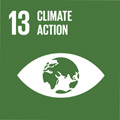- Docente: Tiziano Maestri
- Credits: 6
- SSD: FIS/06
- Language: English
- Moduli: Tiziano Maestri (Modulo 1) Federico Porcù (Modulo 2)
- Teaching Mode: Traditional lectures (Modulo 1) Traditional lectures (Modulo 2)
- Campus: Bologna
- Corso: Second cycle degree programme (LM) in Science of Climate (cod. 5895)
Learning outcomes
Satellite earth observation is an essential tool that allows a global and integrated view of the whole earth system, allowing quantitative measurements of a large number of relevant geophysical parameters including essential climate variables. In this courses, the students will learn the main capabilities of current satellite earth observing system and the main techniques used for the derivation of key products concerning the earth's atmosphere and surface properties. Practical exercises on satellite data analysis will be proposed during the classes.
Course contents
Module 1
Satellite measurements of LW and SW radiance fields (theory)
• Effective Bi-Directional Reflectance Function
• Surface spectral signatures at sw
• Brightness temperature
• Refractive index of liquid and solid surfaces
• Surface emissivity at lw
2 Detection of snow and vegetation (theory and practice)
• Normalized difference snow index
• Partially snow covered pixel, dirty snow
• Ice surface temperature
• Vegetation index
• Leaf Area index and Enhanced VI
• Atmospheric perturbations on snow and vegetation index: Aerosols, water vapor, Rayleigh scattering, thin cirri
3 Water vapor and surface temperature (theory and practice)
• Precipitable water vapor from sw channels
• Split window techniques: Land surface temperature
• Absorption and emission of radiation by sea water
• Sea Surface temperature from infrared radiometers
4 Fire detection (theory and practice)
• The 4 microns band
• Temperature sensitivity
• Multichannel threshold and contextual algorithms
• Normalized burn ratio
5 RGB techniques (theory and practice)
• The process of creating RGB: examples
• Meteosat RGBs: natural, airmass, dust
• Detecting oil spills
6 Detection of clouds from passive measurements (theory and practice)
• The full radiative transfer equation and the cloud parameters
• Detection of thin cirrus clouds
• Cloud phase derivation: techniques
• Cloud altitude: co2 slicing and sorting
• Nakajima-King method for cloud OD and Reff
7 Detection of aerosols from passive methods (theory and practice)
• Radiative transfer equation in single scattering approximation
• Aerosol reflectance over black and reflective surfaces
• Global aerosol optical depth
8 Sounder data (theory)
• The information content in the high spectral resolution measurements
• Inversion techniques for derivation of gas and temperature profile
• Optimal estimation, the role of the a-priori information
• Detection of volcanic ash and outgas
• Example from IASI
Module 2
Basics of satellite orbits and sensor parameters:
Geostationary and low Earth orbits
Parameters: Pixel, Field of view, dwell time
Scanning techniques: whiskbroom and pushbroom sensors
Sensor noise: NeSR, NeDT, SNR
Resolution: temporal, spatial, spectral, radiometric
Dataset and products:
Climate Data Records
Copernicus Services
The Earth’s atmosphere and surface in the microwave spectrum:
RTE in the microwave
Absorption and emission of gases
Properties of water vapour and particles
Surface emissivity
Microwave active sensors:
radar equation
ground based and space-borne systems
Techniques to estimate precipitation rates with passive sensors:
The GPM constellation
Statistical and physical methods
Blended techniques
Techniques to estimate snow/ice parameters:
microwave emission from snow and glacier ice
Techniques to estimate soil moisture:
microwave emission from wet soil
space gravimetry
Validation of satellite products
Readings/Bibliography
Lecture notes and selected articles and documents
Teaching methods
The Teachers will develop the course content (6 ects) by using both the blackboard and the video projector.
The topics comprise a theoretical part followed by exercises with simple codes (written in MATLAB) for the visualisation and analysis of satellite data.
Assessment methods
The assessment of the student's learnings is obtained by means of an oral test which serves to evaluate the achievements of the main objectives of the course:
*) understanding the fundamental laws regulating the radiative transfer in atmosphere and their application to measurements
*)understanding the main satellite measurements' methods
*) the ability to interpret satellite remote sensing data and products of atmosphere and surface
The test will cover the whole program and will last at about 1 hour. A final grade (out of 30) is foreseen.
Teaching tools
The following items will be made available to Students:
* Lectures notes (in pdf format).
* Scientific articles useful for the investigation of specific lines of research.
* A data analysis software kit (in MATLAB) and satellite data
* Bibliography and referencesOffice hours
See the website of Tiziano Maestri
See the website of Federico Porcù
SDGs

This teaching activity contributes to the achievement of the Sustainable Development Goals of the UN 2030 Agenda.
